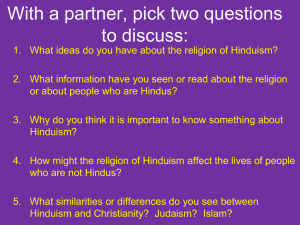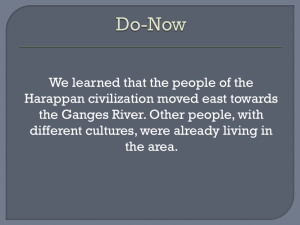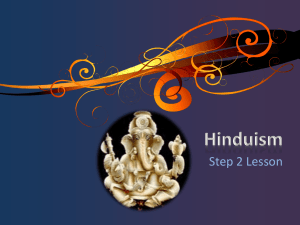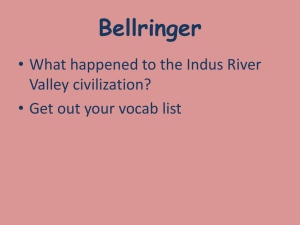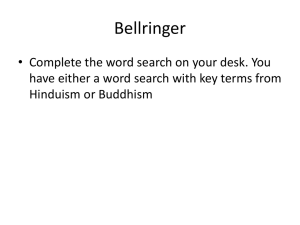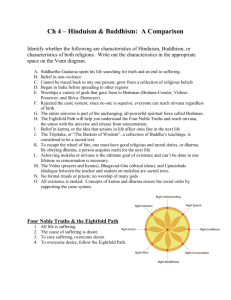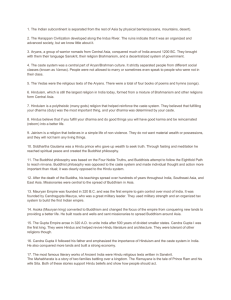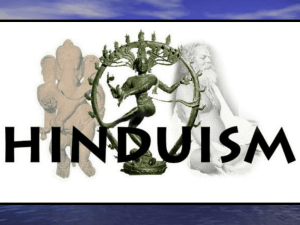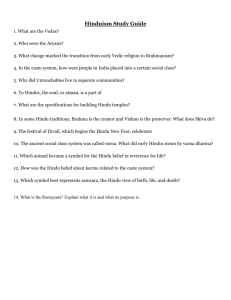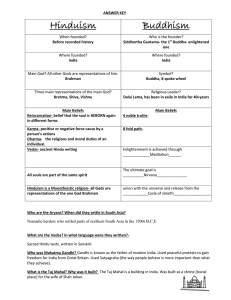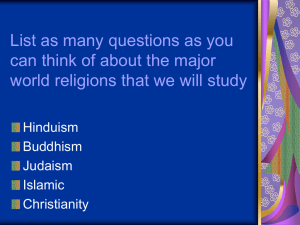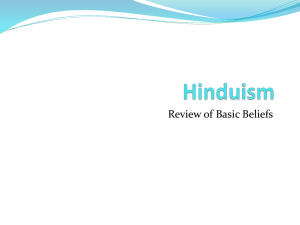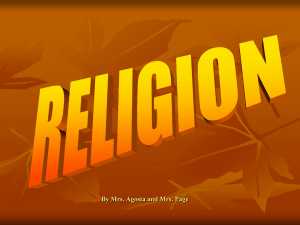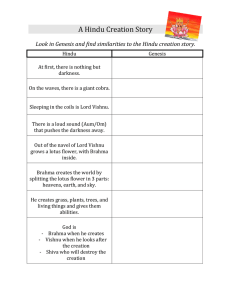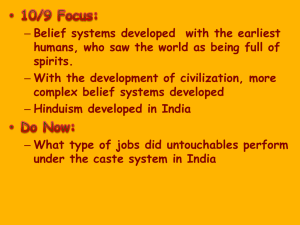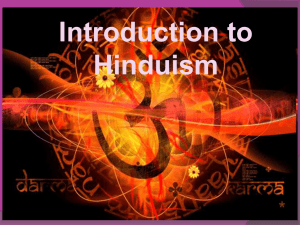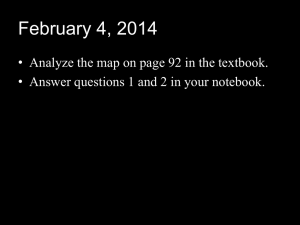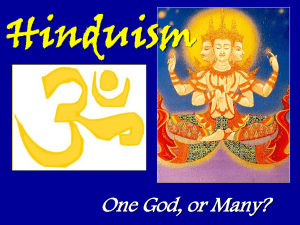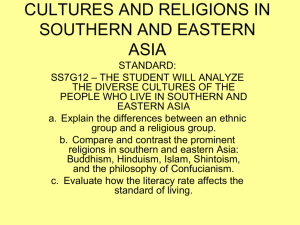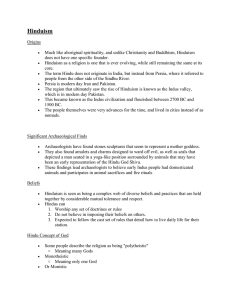Hinduism - Moore Public Schools
advertisement
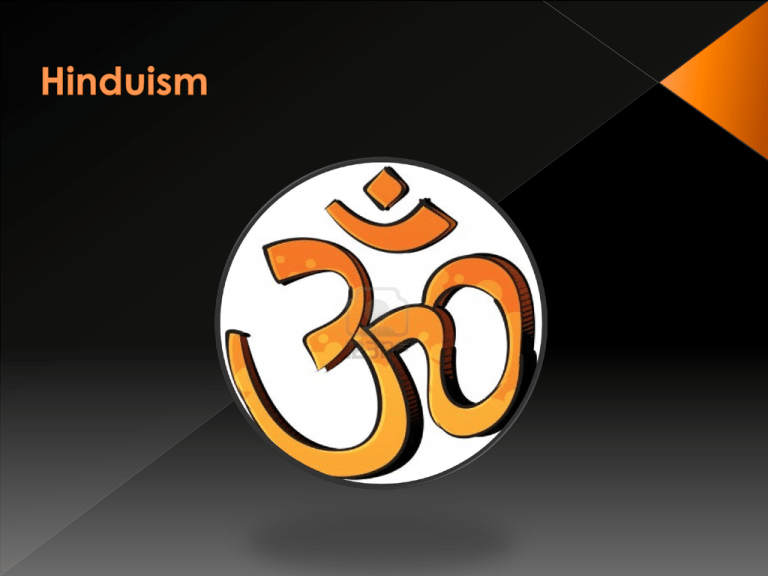
K-What I KNOW W-What I WANT to know L-What I LEARNED The Hindu god Brahman showing the different ways it shows itself to people HINDUISM is one of the world's oldest religions. Over 2/3's of the world's Hindus live in India; large numbers reside in Africa also. Not Monotheistic, but not totally polytheistic. God is called Brahman, but takes many forms. Believes in reincarnation or being born again in different forms until reaching spiritual enlightenment or Moksha. › “God is one, but wise people know it by many names.” Brahman “the Creator” › “God is one, but wise people know it by many names.” Vishnu “the Preserver” Vishnu is one of the principal Hindu deities, worshipped as the protector and preserver of the world and restorer of dharma (moral order). He is known chiefly through his avatars (incarnations), particularly Rama, Krishna and Buddha. In Hinduism, persons who have depth of character and the capacity to fight evil are depicted as blue skinned. ... "The theory of the blue coloring of Krishna goes to the fact that the Creator has given the maximum of blue to nature i.e. the sky, the oceans, the rivers and lakes. The deity who has the qualities of bravery, manliness, determination, the ability to deal with difficult situations, of stable mind and depth of character is represented as blue colored. Lord Krishna spent his life protecting humanity and destroying evil, hence he is colored blue." › “God is one, but wise people know it by many names.” Shiva “the Destroyer” Both kind and cruel › “God is one, but wise people know it by many names.” Ganesha Remover of Obstacles Lord of Success Castes-Social groups which people are born and can rarely be changed. High Caste-purer and closer to moksha › Forbidden to eat with or marry outside of caste › Determined where and how you lived Lower Caste › › › › Spiritually polluted Grave diggers Street cleaners Also called “Untouchables” called dalits Although unequal, created a stable social structure Couldn’t change caste, but could change their caste in the next life by fulfilling the duties of their present caste. Dharma-religious and moral duties of an individual. Duties vary according to class, occupation, gender and age. Karma-actions of a person’s life that affect his or her fate in the next life. Moksha-Spiritual Perfection Traditional Hindu society was divided into groups of four classes (or varnas). This was known as the "caste system." The goal of Hindus is to someday join with Brahman. Until that union takes place, believers are in a continuous process of rebirth called "reincarnation." At death, the Hindu‘s Deeds (karma) & Duty (Dharma) determine what the next life will be. Followers work to break this cycle--birth, death, re-birth-- (referred to by writers as the "Wheel of Life") and gain release. The Hindu's soul then merges with Brahman in a condition of spiritual perfection (moksha). Vedas-sacred text of epic poems, rituals and teachings written in Sanskrit. › Mahabharata Bhagavad-Gita › Ramayana Ahimsanonviolence › All things are aspects of Brahman and deserve to be respected Grew out of Hindu traditions Rejected the idea that Brahmin priests alone could perform certain sacred rites Teachings › Meditation › Self denial › Extreme ahimsa Regardless of your belief system, is there any part of Hinduism you find valuable or like the way you believe?
